Dr. Elli Weisbaum shares her experiences of bringing Plum Village mindfulness teachings and practices into healthcare settings.

My first retreat as a ten-year-old
My parents and I attended our first family retreat with Thay and the sangha in 1998 at the OMEGA Institute in New York State. Before going on this retreat, my mom had read several of Thay’s books. From this, she had begun integrating some of Thay’s teachings into her work as a visiting artist in high schools. My dad is a physician and had his own medical practice. As a family we were interested in exploring more about the practice of mindfulness so we all agreed to go on a new adventure and attend Thay’s next North American retreat!
Our very first impression of the monastic community was quite memorable. As we drove up to the retreat centre, several sisters were walking along the grass near a pond. We had never seen or met a Buddhist monastic before. The image was beautiful. A light breeze was gently blowing their robes and they were smiling as they slowly walked. Then, suddenly, some large geese started honking and running towards them! The sisters immediately started running away from the geese, but rather than panicking or being frightened, they began laughing as they ran. My parents and I also began laughing and my mom turned to me and said, “I think we are home.”
After this experience, we attended the family retreat each year that Thay and the sangha came to North America, so I had the joy growing up attending Plum Village’s children’s program and then the teens’ program. Happily, not long after I graduated from the teens’ program, Thay and the sangha started the Wake Up Movement for “young adults” and I had the opportunity to participate in the 2011 East Coast Wake Up Tour. On this tour, a group of monastics and lay friends in their twenties and thirties traveled to universities across the East Coast of the United States (including Yale, Harvard, and Brown). I have continued to practise closely with the sangha, becoming a member of the Order of Interbeing in 2015. I am a founding member of the Wake Up Toronto Sangha and currently part of the North American Wake Up Care Taking Council.
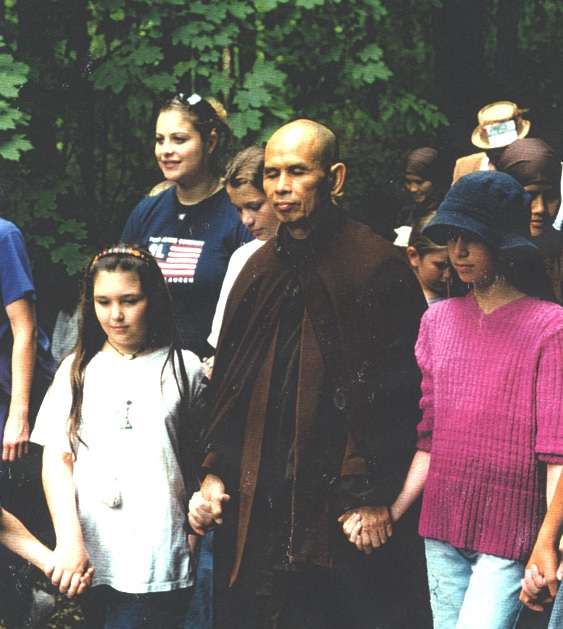
Inspiration to bring the Plum Village practice into healthcare settings
A few specific life experiences played a role in my interest to research the application of mindfulness in healthcare settings: 1) Growing up with a father who was a physician; 2) An interest in caring for caregivers (having been close to many teachers growing up with my mom working as an artist in elementary/high-schools); and 3) Experiencing my own illness and subsequent hospital stay/admission when I was fifteen years old.
I was hospitalized after a combination of viruses triggered an autoimmune response that overactivated my immune system. The first night I was in the hospital, the doctors told me and my parents that they did not know if I would make it through the night. Through this first night, and over the course of my hospital stay – which included a seemingly never-ending battery of tests – my family drew upon many of the Plum Village practices to support us. For example, during procedures we would sing Plum Village songs and come home to our breathing. Each morning during hospital rounds, I would be asked about the parts of my body that were in pain. After this, my mom would guide me through a deep relaxation practice so that I would also spend time each morning sending gratitude and love to my body. The practice of deep relaxation (sometimes called a body scan) also helped me become aware of the parts my body that were free of pain, even if this was just my left pinky toe. Since my hospital experience, I have been asked when I began using the practice of mindfulness to heal. My answer is that through mindfulness, we can begin to heal at the very same time that we become ill; mindfulness and healing are not separate, and there is no need to wait.
My interest in bringing mindfulness to healthcare was furthered during my master’s degree, which focused on integrating mindfulness and Thay’s teachings into the education sector, along with my time as the international coordinator for Wake Up schools (an initiative to support the cultivation of mindfulness in educational settings). Through my graduate studies I was introduced to the scientific literature about burnout amongst caring professions, particularly educators and clinicians.
These different life experiences led me to be interested in exploring how healthcare and occupational environments could be spaces where clinicians could flourish and thrive, rather than burn out. I was particularly inspired by a conversation Thay had with the dean of the School of Public Health at Harvard. During this conversation Thay proposed that everyone who is part of a community of health should learn how to live in such a way that the environment of the healthcare practitioner is also healthy. Thay suggested that how healthcare practitioners eat, walk and work could create an environment filled with joy and happiness, so that the health community itself was an instrument of healthy change. Thay proposed that this kind of environment would benefit the health of everyone in the community, including patients, families, clinicians, and administrators.
From my own lived experience growing up with Thay’s teachings, along with researching their integration into education settings, I had already begun the work of considering how to bridge the knowledge streams of science and Dharma. From these experiences, I knew that these two knowledge streams had the potential to be complementary. I also knew that there were questions and challenges about how to present the Dharma in a way that was acceptable and accessible within the healthcare setting. My novel background as both an academic researcher and long-term practitioner with Plum Village offered me a unique perspective and access to the teachings that I hoped could be of service to both the international healthcare community and the Plum Village community. Combined with my aspiration to further develop my skills as a researcher and continue my academic learning journey, along with a gentle push from one of my mentors in Toronto, Michele Chaban, I decided to apply to the PhD program at the University of Toronto with the aim to study the impact of mindfulness on physician wellbeing.
Challenges
There is growing interest within the sector of healthcare to address systemic issues such as burnout. Mindfulness has been recommended across the literature as one potentially effective modality. While the evidence-base for mindfulness has generated interest, there are significant challenges when attempting to address systemic change within healthcare delivery systems. These challenges include practical concerns and skepticism about integrating knowledge from outside the dominant cultural system in relation to acceptability, applicability, and feasibility. There are also barriers that stem from long-standing social and cultural elements embedded within the context of medical culture. Based on the existing literature, along with data generated from the physicians who participated in my PhD research study, these socially and culturally embedded barriers include competition, perfectionism, individualism, demanding workloads and higher value placed on “achievement” and “success” than “self-care” and “work/life balance.”
To overcome these challenges, I drew upon the very same bodies of knowledge which could be seen to have fostered these barriers–being the traditions of science and the Dharma. On the scientific end, I drew upon the academic tradition of evidence and rigour to build a high-quality research study that would be acceptable to the scientific community and culture of medicine. Simultaneously, I took refuge in Thay, the sangha, and my own practice. In particular, I took inspiration from Thay’s many years of perseverance in the face of great challenge and difficulty. Over the course of working on my PhD, I would return to writings and talks from Thay for inspiration. As I wrote my dissertation, I would sometimes imagine him peering over my shoulder, encouraging me to keep going no matter how tired I felt or how challenging the work was. It is in this spirit that my 400-page dissertation begins with the following quote from Thay:
"Meditators since the beginning of time have known that they must use their own eyes and the language of their own times to express their insight. Wisdom is a living stream, not an icon to be preserved in a museum. Only when a practitioner finds the spring of wisdom in his or her own life can it flow to future generations. Keeping the torch of wisdom glowing is the work of all of us who know how to clear a path through the forest in order to walk on ahead.” The Sun My Heart p. viii
This quote provided ongoing encouragement throughout my PhD journey. In addition to encouragement, this quote–along with many other invitations across Thay’s body of work to update and integrate the Dharma–provided me with a sense of permission from Thay to innovate and add my own voice to the ongoing adaptation and application of the Dharma. Taking refuge in the sangha also manifested in a very pragmatic way through the establishment of a Monastic Advisory Committee, which I formally set up as part of my PhD process.
Support and collaboration with Thay and Plum Village
I begin this section with a deep bow of gratitude to the Plum Village monastic community, who have been a meaningful support across so much of my life. Every retreat, teaching tour, online Dharma talk, recording on the Plum Village app, etc. have been made possible by the incredible humans who have chosen to walk the monastic path. To support my PhD research study, a Plum Village Monastic Advisory Committee was established. The members included Br. Phap Dung, Br. Phap Huu, Br. Phap Linh and Sr. Hien Nghiem. They were invited to provide feedback across all phases of the research study, including program development/implementation, data analysis and final thesis write up–along with collaboration on future publications. Their feedback helped to guide the study and ground the work in the teachings and language of Thay and the Plum Village community.
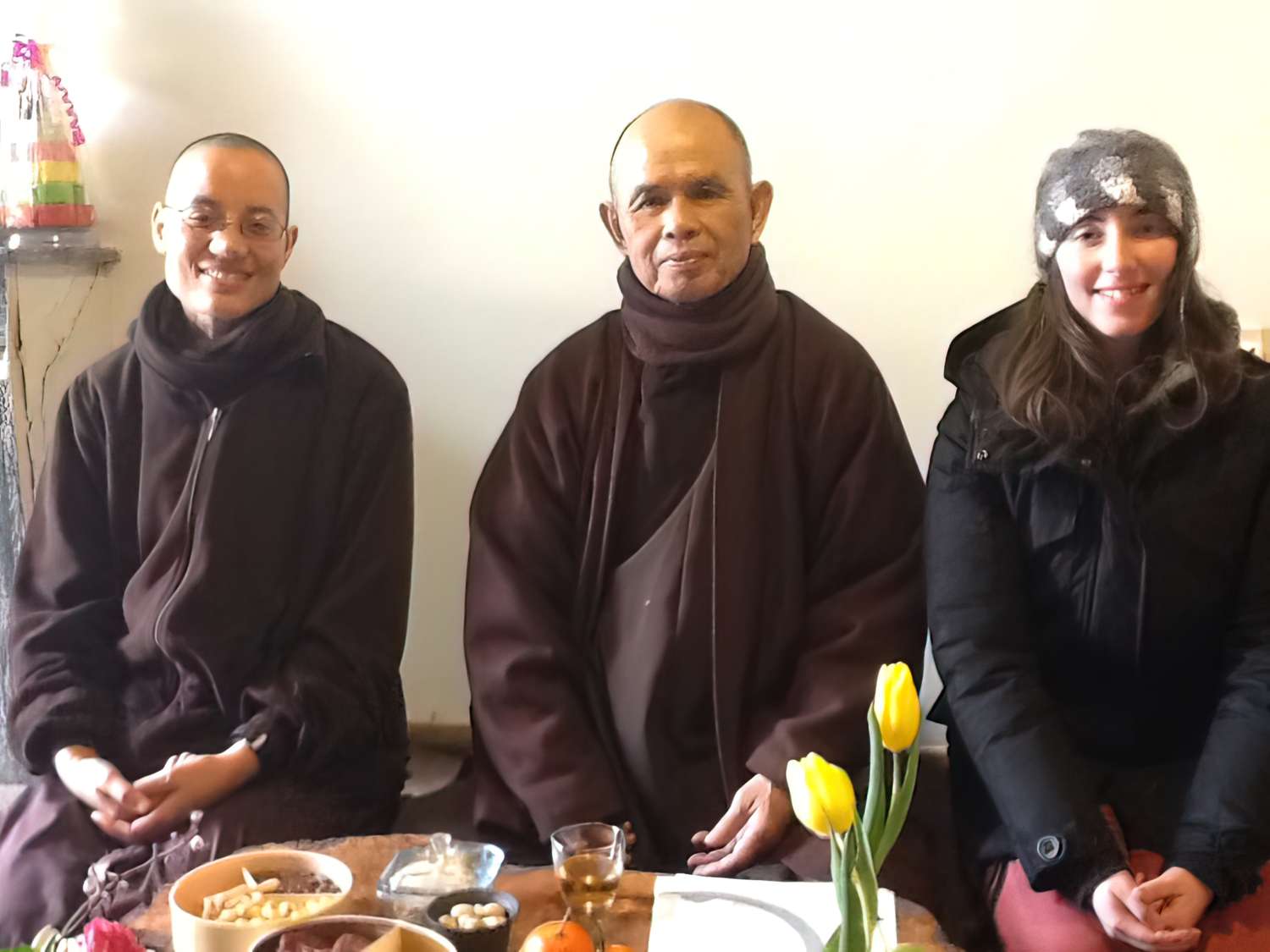
Mindfulness in healthcare: a brief history and overview of my research study
The popularity and application of mindfulness in contemporary settings has been growing across key sectors of society, including healthcare, education, the workplace, and the law. Within the scientific literature, mindfulness is credited as having a wide range of potential health benefits, including reduced anxiety and stress, along with increased wellbeing, self-regulation, cognitive performance, emotional-regulation, motor skills, academic performance, empathy, and greater connection between brain regions associated with “prosocial behaviours” such as compassion. Within the context of healthcare, programs–often called Mindfulness-Based Interventions–have been researched and delivered to patient populations. These include mindfulness programs developed for patients with chronic pain, patients relapsing in depression, cancer patients, adolescents with chronic illness, and people in recovery from addiction. To date, none of the published mindfulness-based interventions have been explicitly/primarily based on Thay’s teachings. Therefore, my research aspires to contribute an innovative and novel approach to the field of healthcare, while simultaneously supporting the work and teachings of the wider Plum village community.
A brief overview of my PhD research study
My PhD research study was conducted with 45 physicians from across different specialties (e.g. surgery, emergency department, family medicine etc.) who participated in a five-week mindfulness training program delivered at a hospital in Toronto, Canada. The program was called the “Applied Mindfulness Training Program for Medical Personnel” or AMP-MP for short. I developed this program based on my training and practice with Thay and the Plum Village community. The program was facilitated by two long-term Plum Village practitioners who are both registered clinicians, David Viafora and Dagmara Urbanowicz. I was present at each session as a “participant observer” to take research field notes and help with administrative support. Following the completion of the program, I conducted semi-structured qualitative interviews with twenty-eight of the physicians. Analysis of the interviews showed that participants’ experience of mindfulness benefitted their personal sense of wellbeing, along with enhancing their interactions with their patients, colleagues, and administrators. The participants describe Thay’s teachings as well liked/enjoyable/practical and highly applicable to their daily life.
I am deeply grateful to each participant for sharing their experience and stories with me. As I write this reflection, I am reminded of one surgeon in particular who, during the first session, expressed that they did not believe in this “mindfulness stuff,” and then in their post-program interview stated that they “fell in love with the bell” and had considered “stealing the bell” at the end of the program, so they could invite it for their colleagues before their next surgery. Below are some direct quotes from the study participants which illustrate, in their own words, their experience of the practice.
I found the awareness of breath especially helpful. I’ve been operating almost every day the past month and it gets stressful and the days are really long and fast-paced and we don’t really stop to eat or do anything. I found just taking the few minutes to breathe betwen patients really helpful just to clear my head and then quickly move on to the next patient.
Ophthalmologist
I think I will definitely continue it because I find that my day is going more smoothly and I end up with a happier day and so that means I come home happier. So, I don’t bring back all of the frustration and stuff that was happening through the day. I think, those deep breaths in between patients, the mindful walking that I can do is great.
Rheumatologist
I spoke about the breathing, so you come back to your mindful breathing and it helps you to cope with almost every situation. Like, you have that interaction with a patient. So, you can immediately react or you can just pause when you feel it; if you pause and you take a breath and you do it twice, it gives you some time to think. And then if you’re relaxed, it immediately gives you the way to react differently, better.
Surgeon
No beginning, no end
There is so much more that could be shared about the integration of Thay’s work into healthcare. Happily, we know from Thay that by looking deeply we can see there is no beginning or end. So, while in the historical dimension this article is concluding, my deep aspiration is to continue working and collaborating with the Plum Village monastic and lay communities to bring the practice into healthcare settings, to cultivate a healthy and compassionate society.


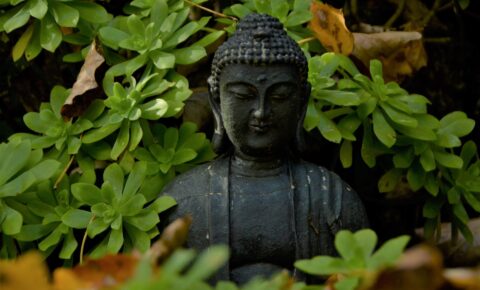
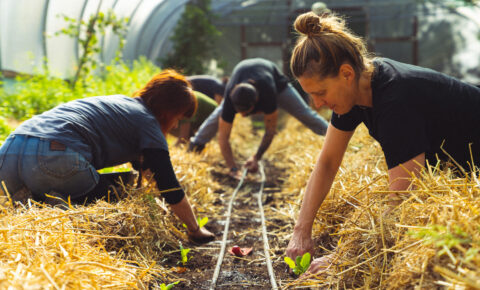
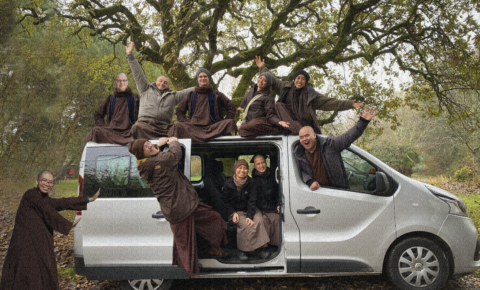
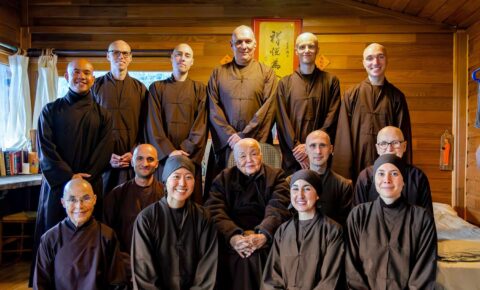
Join the conversation